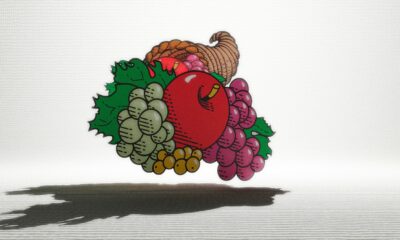Topic
Charmsami: Where Ancient Traditions Meet Modern Times

In the hustle and bustle of our modern world, there exists a realm where time seems to stand still, where ancient traditions weave themselves seamlessly into the fabric of contemporary life. This realm is none other than the enchanting world of Charmsami—a mystical practice that has captivated the hearts and minds of people around the globe. In this blog post, we embark on a journey to uncover the captivating history and revival of Charmsami, exploring its mysterious origins, its evolution through the ages, and its newfound relevance in our fast-paced society.
Unraveling the Mysteries of Charmsami
To understand Charmsami is to delve into the depths of history, where the lines between myth and reality blur, and ancient wisdom whispers secrets of the past. While the exact origins of Charmsami remain shrouded in mystery, its roots can be traced back to antiquity, where it was practiced by civilizations long forgotten. From the sands of ancient Egypt to the mountains of Tibet, Charmsami found expression in various forms, each imbued with its unique cultural significance.
At its core, Charmsami is a spiritual practice—a means of tapping into the unseen energies that permeate the universe and harnessing them for protection, prosperity, and guidance. From amulets and talismans to incantations and rituals, practitioners of Charmsami employ a diverse array of methods to channel these energies and manifest their intentions into reality.
The Evolution of Charmsami Through the Ages
As civilizations rose and fell, so too did the practice of Charmsami evolve, adapting to the changing tides of history while retaining its core essence. In ancient times, Charmsami was often intertwined with religious beliefs, with priests and shamans serving as intermediaries between the mortal realm and the divine. In medieval Europe, Charmsami flourished alongside the rise of alchemy and the occult, with practitioners delving into the mysteries of the arcane in search of hidden knowledge and power.
During the Enlightenment period, Charmsami fell out of favor as rationalism and skepticism took hold, relegating it to the realm of superstition and folklore. Yet, despite centuries of suppression, the allure of Charmsami persisted, quietly simmering beneath the surface, waiting for the right moment to resurface.
The Revival of Charmsami in the Modern Era
In the midst of the technological revolution of the 21st century, a curious phenomenon began to unfold—a resurgence of interest in ancient wisdom and esoteric practices. As people sought solace from the stresses of modern life and yearned for a deeper connection to the world around them, Charmsami experienced a renaissance, drawing in a new generation of seekers eager to unlock its mysteries.
One need only look to the proliferation of online forums, social media groups, and specialty shops dedicated to Charmsami to see evidence of its newfound popularity. From millennials seeking guidance in matters of love and career to baby boomers rediscovering their spiritual roots, Charmsami has found resonance across generations, transcending cultural and geographical boundaries.
Incorporating Charmsami into Daily Life
So how does one go about incorporating Charmsami into their daily life? The answer lies in embracing the principles of intention, mindfulness, and reverence for the interconnectedness of all things. Whether it be wearing a protective amulet, performing a ritual to attract abundance, or reciting a mantra for inner peace, the practice of Charmsami offers countless avenues for self-expression and personal growth.
Moreover, Charmsam’i serves as a reminder of our intrinsic connection to the natural world and the importance of living in harmony with the rhythms of the universe. By cultivating a deeper awareness of the energies that surround us and honoring the wisdom of our ancestors, we can tap into a wellspring of power and wisdom that lies dormant within each of us.
Conclusion
World of Charmsam’i beckons with its promises of magic and mystery, inviting us to explore the depths of our souls and unlock the secrets of the cosmos. From its ancient origins to its modern-day revival, Charmsam’i serves as a bridge between the past and the future, offering solace, inspiration, and wonder to all who dare to venture into its enchanted realm.
So, dear reader, whether you are a seasoned practitioner or a curious newcomer, I invite you to embrace the allure of Charmsam’i and embark on a journey of discovery unlike any other. For in this enchanted world where ancient traditions meet modern times, miracles await those who believe in the power of magic.
Topic
Evil Eye Bracelet: A Cultural Icon of Protection and Style

In the realm of ancient beliefs and contemporary fashion, few symbols carry as much weight and intrigue as the Evil Eye. From its origins steeped in ancient civilizations to its modern-day manifestation as a trendy accessory, the Evil Eye continues to captivate minds and adorn wrists worldwide. In this exploration, we delve into the rich history, cultural significance, and modern interpretations of the Evil Eye bracelet, uncovering its enduring allure.
Origins and Cultural Significance
The concept of the Evil Eye spans across numerous cultures and civilizations, dating back thousands of years. Its roots can be traced to ancient Mesopotamia, Greece, Rome, and beyond, where it was believed that certain individuals possessed the power to cast curses or malevolent glances capable of bringing harm or misfortune to others. To ward off this evil gaze, people turned to various talismans and charms, among which the Evil Eye emerged as one of the most prominent symbols of protection.
In many cultures, the Evil Eye is depicted as a blue eye, symbolizing vigilance, wisdom, and protection against malevolent forces. The color blue, often associated with the sky and the divine, is believed to possess mystical properties capable of deflecting negative energy.
Evolution into Fashion
Over time, the symbolic significance of the Evil Eye expanded beyond its protective function to become a popular motif in jewelry and fashion. Today, the Evil Eye bracelet is not merely a spiritual safeguard but also a stylish accessory embraced by people of diverse backgrounds.
One reason for its widespread appeal is its versatility. Whether crafted from traditional materials like gold and silver or adorned with colorful beads and gemstones, Evil Eye bracelets come in various designs to suit different tastes and occasions. From delicate chains to intricate woven patterns, each piece carries its own unique charm, making it a staple in both casual and formal attire.
Global Influence and Interpretations
While the Evil Eye holds universal significance as a symbol of protection, its interpretation varies across cultures. In the Mediterranean region, where belief in the Evil Eye remains deeply ingrained, wearing an Evil Eye bracelet is seen as a proactive measure to deflect envy and negativity. Similarly, in Middle Eastern and South Asian cultures, the Evil Eye is revered as a potent amulet against the malevolent influence of jealousy and ill will.
In addition to its protective properties, the Evil Eye bracelet has also been embraced by Western fashion enthusiasts drawn to its aesthetic appeal. In this context, it is often viewed more as a trendy accessory than a spiritual talisman, yet its symbolic resonance endures, adding depth and meaning to personal style.
Modern Interpretations and Customization
As the popularity of the Evil Eye bracelet continues to soar, designers are incorporating innovative twists to refresh its timeless appeal. Contemporary interpretations may feature modern materials, avant-garde designs, or playful embellishments, catering to diverse preferences and fashion sensibilities.
Moreover, the advent of customizable jewelry has allowed individuals to infuse their Evil Eye bracelets with personal significance. Whether inscribed with initials, birthstones, or other symbols, these personalized pieces serve as talismans of individual identity and protection, forging a deeper connection between wearer and accessory.
Beyond Fashion: Rituals and Beliefs
Despite its fashionable facade, the Evil Eye bracelet remains rooted in ancient beliefs and rituals that transcend mere ornamentation. In some cultures, the act of wearing or gifting an Evil Eye bracelet is accompanied by rituals meant to activate its protective powers, such as reciting prayers or performing blessings.
Moreover, the symbolism of the Evil Eye extends beyond personal protection to encompass communal well-being. In societies where belief in the Evil Eye is prevalent, rituals aimed at averting its influence are woven into daily life, serving as a reminder of the interconnectedness between individuals and their surroundings.
Conclusion
In the tapestry of human history and culture, the Evil Eye bracelet stands as a testament to humanity’s enduring quest for protection and self-expression. From its ancient origins to its modern incarnation as a fashion statement, it continues to bridge the gap between tradition and innovation, spirituality and style.
As we adorn ourselves with the emblematic gaze of the Evil Eye, we not only invoke its protective powers but also pay homage to the collective wisdom of our ancestors. In a world where uncertainty looms large, the Evil Eye bracelet serves as a tangible reminder of our resilience in the face of adversity, infusing our lives with both beauty and meaning.
Topic
luv.trise: A Platform for Meaningful Connections

In today’s fast-paced world, finding meaningful connections can sometimes feel like an insurmountable task. Traditional dating apps often focus on quantity over quality, leaving users frustrated with superficial matches and empty interactions. However, there is a beacon of hope for those seeking genuine relationships: luv.trise. This revolutionary dating app is designed to help individuals find meaningful connections with ease, combining cutting-edge technology with user-friendly features to streamline the dating process.
What is luv.trise?
luv.trise stands out from the crowd as an innovative dating platform that prioritizes meaningful connections over fleeting encounters. Unlike other apps that rely solely on swipes and superficial judgments, luv.trise utilizes advanced algorithms to match users based on their preferences, interests, and compatibility factors. Whether you’re looking for love, friendship, or companionship, luv.trise offers a platform where you can explore and engage with like-minded individuals effortlessly.
How Does it Work?
Getting started with luv.trise is simple. Users can download the app from the App Store or Google Play Store and create a profile. The profile creation process is straightforward, requiring users to provide information about themselves, including their interests, hobbies, and what they’re looking for in a partner. Once the profile is complete, luv.trise’s powerful matching algorithm goes to work, suggesting compatible matches based on the user’s criteria.
Key Features of luv.trise
Profile Creation
Creating a profile on luv.trise is quick and easy. Users can upload photos, write a bio, and share details about their interests and preferences. This information helps the app’s algorithm tailor match suggestions to each user’s specific criteria.
Matching Algorithm
luv.trise’s matching algorithm analyzes users’ profiles, preferences, and behavior to suggest compatible matches. It takes into account factors such as location, age, interests, and relationship goals to ensure that users are connected with individuals who are well-suited to them.
Messaging and Communication
Once a match is made, users can engage in conversation through luv.trise’s messaging feature. This allows them to get to know each other better before deciding to meet in person. The app also offers additional communication tools such as voice and video calling to facilitate meaningful connections.
Safety and Privacy
Safety and privacy are top priorities for luv.trise. The app employs stringent security measures to protect users’ personal information and ensure a safe dating environment. Features such as photo verification and report buttons help to maintain the integrity of the platform and safeguard users from unwanted interactions.
Benefits of Using luv.trise
Finding Compatible Matches
One of the primary benefits of using luv.trise is the ability to find compatible matches quickly and easily. The app’s sophisticated matching algorithm takes the guesswork out of dating by connecting users with individuals who share their interests and values.
Convenient Interface
luv.trise boasts a sleek and intuitive interface that makes navigating the app a breeze. Whether you’re browsing profiles, sending messages, or adjusting your settings, everything is designed to be user-friendly and accessible.
Enhanced Security
With luv.trise, users can feel confident knowing that their personal information is protected. The app employs industry-leading security measures to ensure that data is kept safe and secure at all times.
Personalized Experience
luv.trise offers a personalized experience tailored to each user’s preferences and desires. From customized match suggestions to personalized messaging, the app is designed to help users find meaningful connections that resonate with them on a deeper level.
Success Stories
Thousands of users have found love and companionship through luv.trise. From casual dates to long-term relationships, the app has helped people from all walks of life connect with others who share their interests and values.
Conclusion
luv.trise is more than just a dating app—it’s a platform for meaningful connections. With its innovative features, personalized approach, and commitment to safety, luv.trise is changing the way people meet and interact online. Whether you’re looking for romance, friendship, or something in between, luv.trise offers a space where you can explore and engage with like-minded individuals in a safe and welcoming environment.
Topic
Twisted Tea: Unraveling the Charm of a Popular Malt Beverage

In the ever-evolving landscape of alcoholic beverages, one particular concoction has been making waves and capturing the taste buds of a diverse consumer base – Twisted Tea. This malt-based drink has grown in popularity over the years, enticing consumers with its unique blend of sweetness and spirited essence. In this article, we’ll take a closer look at the origins, ingredients, brewing process, and the cultural impact of Twisted Tea, exploring what makes it a beloved choice among beverage enthusiasts.
The Genesis of Twisted Tea
Twisted Tea traces its roots back to the early 2000s when the idea of combining tea and alcohol led to the creation of a refreshing and innovative beverage. The minds behind this delightful concoction sought to provide consumers with an alternative to traditional beer, offering a more palatable option that bridged the gap between beer and sweet tea.
Ingredients
At the heart of Twisted Tea’s appeal lies its carefully selected ingredients. The basic components include malt, tea, water, sugar, and a hint of natural flavors. The malt provides the alcoholic content, while the tea infuses the beverage with a distinct flavor profile. The addition of sugar contributes to the sweetness, creating a well-balanced and smooth drinking experience. The natural flavors are the secret sauce that gives Twisted Tea its unique twist, making each sip a journey of delightful surprises.
Brewing Process
Crafting the perfect Twisted Tea involves a meticulous brewing process that ensures the harmonious integration of its various components. The journey begins with the brewing of malt, a crucial step that lays the foundation for the drink’s alcoholic content. Once the malt has undergone the fermentation process, it is combined with carefully brewed tea, creating the distinctive fusion that defines Twisted Tea.
The addition of water helps achieve the desired alcohol content and balance, ensuring that the beverage is neither too strong nor too weak. The infusion of sugar brings sweetness to the mix, providing a counterpoint to the bold flavors of malt and tea. Finally, the incorporation of natural flavors elevates Twisted Tea to a level of sophistication, turning it into a multifaceted sensory experience.
Flavor Varieties
Twisted Tea offers a variety of flavors to cater to diverse palates, further expanding its appeal. Classic Original, Half & Half (a blend of tea and lemonade), Raspberry, and Peach are just a few examples of the tantalizing options available. Each flavor variant adds a unique dimension to the drinking experience, allowing consumers to explore different facets of Twisted Tea’s flavor spectrum.
Cultural Impact
Beyond its delectable taste, Twisted Tea has made a significant impact on drinking culture. Its emergence marked a shift in consumer preferences, with an increasing demand for beverages that break away from traditional norms. The convenience of having a ready-to-drink malt beverage with the refreshing qualities of tea has resonated with a wide audience, making Twisted Tea a staple at social gatherings, parties, and outdoor events.
The brand’s marketing and packaging also contribute to its cultural appeal. The iconic black cans with vibrant colors and bold typography are instantly recognizable, creating a visual identity that reflects the bold and lively nature of the beverage.
Pairing Possibilities
One of the joys of Twisted Tea lies in its versatility when it comes to food pairings. Its sweet and slightly tangy profile makes it an excellent companion for a variety of dishes. Whether it’s a backyard barbecue, a picnic, or a casual dinner, Twisted Tea can complement the flavors of grilled meats, spicy dishes, and even desserts. The ability to pair well with different cuisines adds to its charm, making it a go-to choice for those who appreciate a beverage that can adapt to various culinary scenarios.
Social Media Presence
The success of Twisted Te’a is not only attributed to its taste but also to its robust presence on social media platforms. Memes, user-generated content, and hashtags related to Twisted Tea have become viral sensations, further fueling its popularity. The brand’s engagement with its audience on platforms like Instagram, Twitter, and Facebook has created a sense of community among Twisted Tea enthusiasts, fostering a dedicated fan base.
Conclusion
Twisted Te’a has undoubtedly earned its place in the pantheon of popular malt beverages, thanks to its innovative combination of tea, malt, and natural flavors. The journey from its inception to its current status as a cultural phenomenon reflects the evolving preferences of consumers and the beverage industry’s commitment to delivering novel and enjoyable experiences.
As we raise our cans of Twisted Te’a to celebrate its success, let’s savor the sweetness, embrace the spirit, and toast to the continued enjoyment of this delightful and twisted creation. Cheers to the tea that’s not afraid to be a little twisted!

 Topic4 months ago
Topic4 months agoEmbracing the Paradox of Retroya: Where Past and Future Collide

 Nail Salons4 months ago
Nail Salons4 months agoNail Salons in Meriden, CT

 Nail Salons4 months ago
Nail Salons4 months agoNail Salons in Ridgewood, NJ

 Technology3 months ago
Technology3 months agoCUBVH: Elevating Possibilities and Inspiring Innovations

 Business2 months ago
Business2 months agoSkyWestOnline: Empowering Employees with Essential Resources

 Manicure Guides4 months ago
Manicure Guides4 months agoHow to Cut Nails? – A Lady’s Guide

 Topic3 months ago
Topic3 months agoFruit of the Loom: Cornucopia Logo Fact Check

 Nail Salons4 months ago
Nail Salons4 months agoNail Salons in Norwalk, CT













